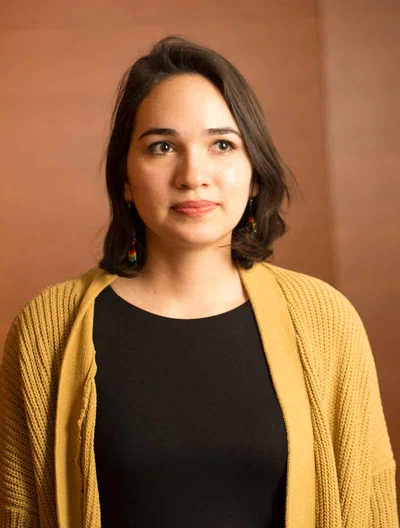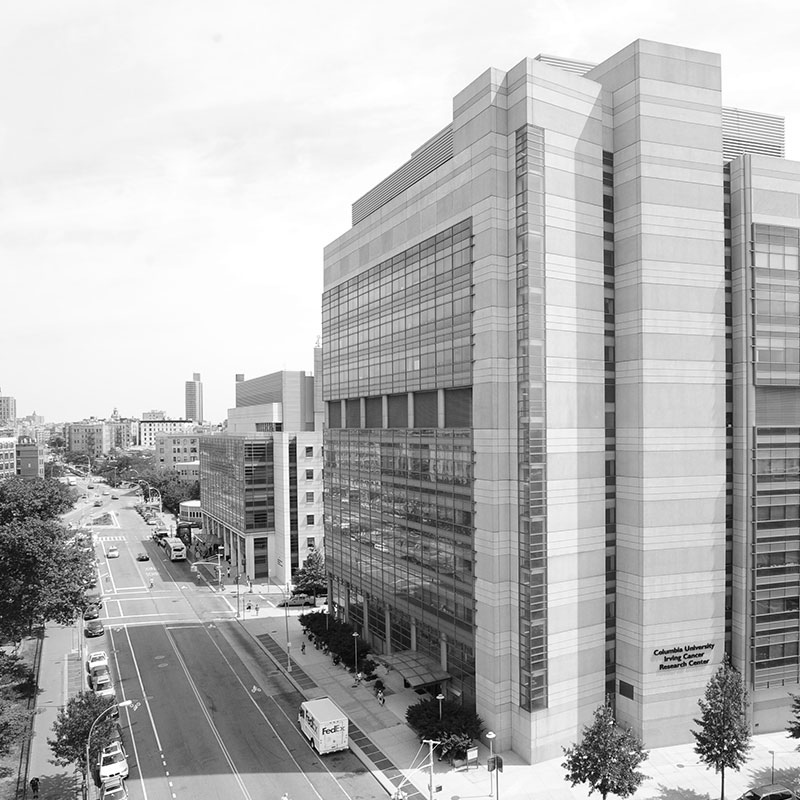
IN THE FACE OF A PANDEMIC
HICCC Researchers Address COVID-19
Cracking Down on COVID-19
Faces of the Frontline
CONNECTING THE DOTS IN CANCER
Engineering + Cancer
Dentistry + Cancer
Public Health + Cancer
RESEARCHERS ON THE CUTTING EDGE
Hitting Pancreatic Cancer Where it Hurts
Commanding Killer T Cells
Election to National Academies
MAKING A DIFFERENCE
A “CURE” for Budding Scientists
Newfound Hope with Cell TherapyVelocity Goes Virtual
Unicorns in the Treatment Rooms
ACKNOWLEDGMENTS
CONTACT US

IN THE FACE OF A PANDEMIC
HICCC Researchers Address COVID-19
Cracking Down on COVID-19
Faces of the Frontline
CONNECTING THE DOTS IN CANCER
Engineering + Cancer
Dentistry + Cancer
Public Health + Cancer
RESEARCHERS ON THE CUTTING EDGE
Hitting Pancreatic Cancer Where it Hurts
Commanding Killer T Cells
Election to National Academies
MAKING A DIFFERENCE
A “CURE” for Budding Scientists
Newfound Hope with Cell TherapyVelocity Goes Virtual
Unicorns in the Treatment Rooms
ACKNOWLEDGMENTS
CONTACT US
MAKING A DIFFERENCE
A “CURE” FOR BUDDING SCIENTISTS

A Summer "CURE" for Budding Scientists
—Beatriz Duran-Becerra
CURE is typically offered to up to 12 qualified students—six undergraduates and six high schoolers—who gain direct experience working in a lab, participate in current scientific research, connect with a Columbia faculty mentor, and get exposed to guest speakers who are leading scientists and physicians. Last summer, CURE operated a bit differently due to the COVID-19 pandemic.
Cover Photo:
Beatriz Duran-Becerra
MAKING A DIFFERENCE
A “CURE” for Budding Scientists


Beatriz Duran-Becerra
A Summer "CURE" for Budding Scientists
The transition from high school to college can be an overwhelming experience for many, and for Beatriz Duran-Becerra it was that, plus a dose of self-doubt.
As the daughter of Mexican immigrants and the first to attend college in her family, Duran-Becerra, who navigated the college admission process mostly on her own, felt out of place when she first arrived at Columbia University in the fall of 2014. She sought support and guidance from a program, called CURE, which helped give students with a knack for science the boost they needed to blaze their own trail.
“The CURE program was a highlight of my time at Columbia,” says Duran-Becerra, who graduated from Columbia College in 2018 with a bachelor’s degree in psychology. “I came in as a very insecure freshman, a first-generation college student from a low-income family. The program helped build my self-confidence and also pushed me to think of even bigger goals to set for myself.”
“The CURE program was a highlight of my time at Columbia. The program helped build my self-confidence and also pushed me to think of even bigger goals to set for myself.”
—Beatriz Duran-Becerra
The transition from high school to college can be an overwhelming experience for many, and for Beatriz Duran-Becerra it was that, plus a dose of self-doubt.
As the daughter of Mexican immigrants and the first to attend college in her family, Duran-Becerra, who navigated the college admission process mostly on her own, felt out of place when she first arrived at Columbia University in the fall of 2014. She sought support and guidance from a program, called CURE, which helped give students with a knack for science the boost they needed to blaze their own trail.
“The CURE program was a highlight of my time at Columbia,” says Duran-Becerra, who graduated from Columbia College in 2018 with a bachelor’s degree in psychology. “I came in as a very insecure freshman, a first-generation college student from a low-income family. The program helped build my self-confidence and also pushed me to think of even bigger goals to set for myself.”
For the past six years, the Herbert Irving Comprehensive Cancer Center (HICCC) has offered CURE, which stands for Continuing Umbrella of Research Experiences, to Columbia freshmen and local high school students, with an emphasis on under-represented people of color, low socioeconomic status, or first-generation college, as a way to expose them to hands-on experiences in science, medicine, and research. The two-year program provides resources that benefit all young students, including mentorship and assistance with the college application process.
Stronger Engagement
Despite a Global Pandemic
When COVID-19 hit New York City in the spring many people, including school-age children, were forced to turn to online learning, and they continued to do so through the summer with virtual camps and activities.
Last June, Community Outreach and Engagement Office (COE) and Cancer Research Career Enhancement Core (CRCE) of the HICCC partnered to hold an online-only science, humanities, and career enrichment week and in July, a month-long program that mirrored the CURE program. Over 120 students registered for this program and approximately 100 students logged on daily for a variety of courses, including how to develop a hypothesis and design a scientific study, and programming centered on career advice in science and medicine. The students were also exposed to lectures about cancer research, cancer health inequities, and COVID-19.
“We didn’t expect to see that many students consistently each day. They were so engaged,” says Jasmine McDonald, PhD, assistant professor of epidemiology at Columbia’s Mailman School of Public Health and co-director of CURE. “These are students who love science, who love research and perhaps don’t get enough hands-on opportunities at their schools.”
One high school participant says she appreciated learning from a diverse set of guest speakers. “All of my science teachers have been men except for fifth grade,” says aspiring doctor Oriana Parsa, a high school sophomore. “It was powerful to see that there are so many women in the cancer research field.”
Through its programming, COE, directed by Mary Beth Terry, PhD, underscores the benefits of exposing young students to science and research, giving them an authentic experience of what the field is like, either as a college student or as a career choice.
For Duran-Becerra, who worked full-time as an outreach navigator at COE following graduation, CURE helped her solidify science as a career choice. In the fall, she started a master’s degree program in public health at Yale.
“Drs. Terry and McDonald were intentional with their mentorship—always following up and checking in on my progress,” adds Duran-Becerra. “They would constantly remind us that we had a place in research and that our voices are important.”
For the past six years, the Herbert Irving Comprehensive Cancer Center (HICCC) has offered CURE, which stands for Continuing Umbrella of Research Experiences, to Columbia freshmen and local high school students, with an emphasis on under-represented people of color, low socioeconomic status, or first-generation college, as a way to expose them to hands-on experiences in science, medicine, and research. The two-year program provides resources that benefit all young students, including mentorship and assistance with the college application process.
CURE is typically offered to up to 12 qualified students—six undergraduates and six high schoolers—who gain direct experience working in a lab, participate in current scientific research, connect with a Columbia faculty mentor, and get exposed to guest speakers who are leading scientists and physicians. Last summer, CURE operated a bit differently due to the COVID-19 pandemic.
Stronger Engagement Despite a Global Pandemic
When COVID-19 hit New York City in the spring many people, including school-age children, were forced to turn to online learning, and they continued to do so through the summer with virtual camps and activities.
Last June, Community Outreach and Engagement Office (COE) and Cancer Research Career Enhancement Core (CRCE) of the HICCC partnered to hold an online-only science, humanities, and career enrichment week and in July, a month-long program that mirrored the CURE program. Over 120 students registered for this program and approximately 100 students logged on daily for a variety of courses, including how to develop a hypothesis and design a scientific study, and programming centered on career advice in science and medicine. The students were also exposed to lectures about cancer research, cancer health inequities, and COVID-19.
CURE is typically offered to up to 12 qualified students—six undergraduates and six high schoolers—who gain direct experience working in a lab, participate in current scientific research, connect with a Columbia faculty mentor, and get exposed to guest speakers who are leading scientists and physicians. Last summer, CURE operated a bit differently due to the COVID-19 pandemic.
Stronger Engagement Despite a Global Pandemic“We didn’t expect to see that many students consistently each day. They were so engaged,” says Jasmine McDonald, PhD, assistant professor of epidemiology at Columbia’s Mailman School of Public Health and co-director of CURE. “These are students who love science, who love research and perhaps don’t get enough hands-on opportunities at their schools.”
One high school participant says she appreciated learning from a diverse set of guest speakers. “All of my science teachers have been men except for fifth grade,” says aspiring doctor Oriana Parsa, a high school sophomore. “It was powerful to see that there are so many women in the cancer research field.”
Through its programming, COE, directed by Mary Beth Terry, PhD, underscores the benefits of exposing young students to science and research, giving them an authentic experience of what the field is like, either as a college student or as a career choice.
For Duran-Becerra, who worked full-time as an outreach navigator at COE following graduation, CURE helped her solidify science as a career choice. In the fall, she started a master’s degree program in public health at Yale.
“Drs. Terry and McDonald were intentional with their mentorship—always following up and checking in on my progress,” adds Duran-Becerra. “They would constantly remind us that we had a place in research and that our voices are important.”
© Columbia University Irving Medical Center,
Herbert Irving Comprehensive Cancer Center,
New York, NY.
Credit and Cast
Download Print-friendly
HICCC Annual Report 2020

